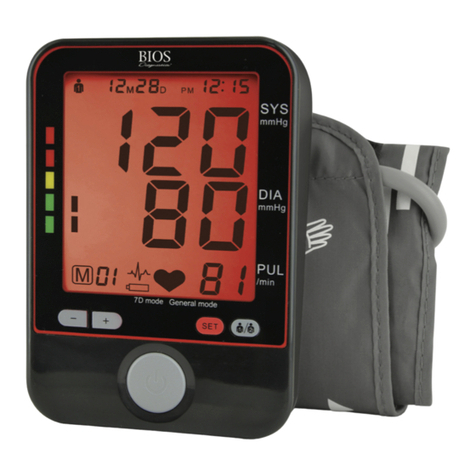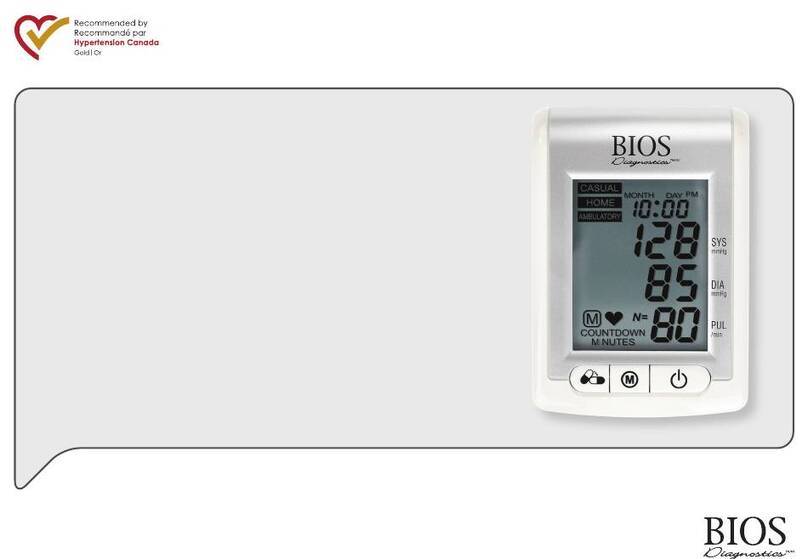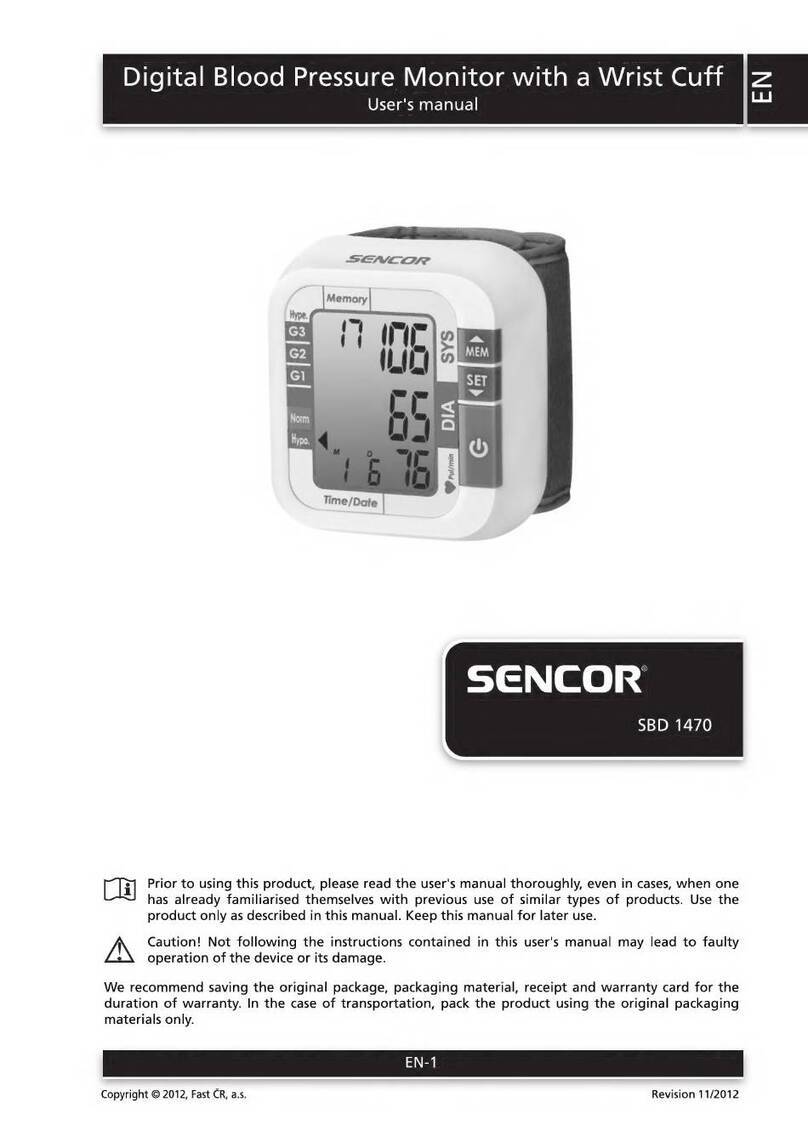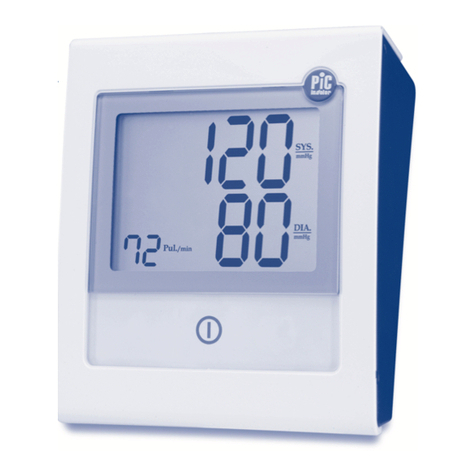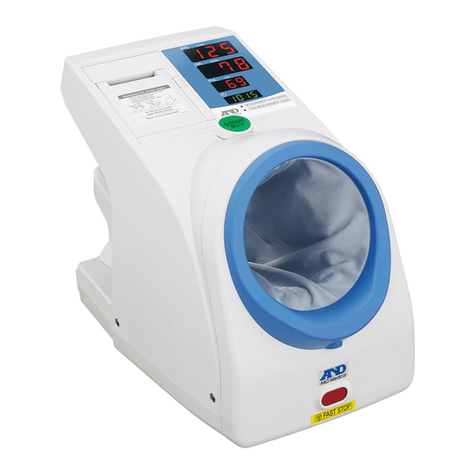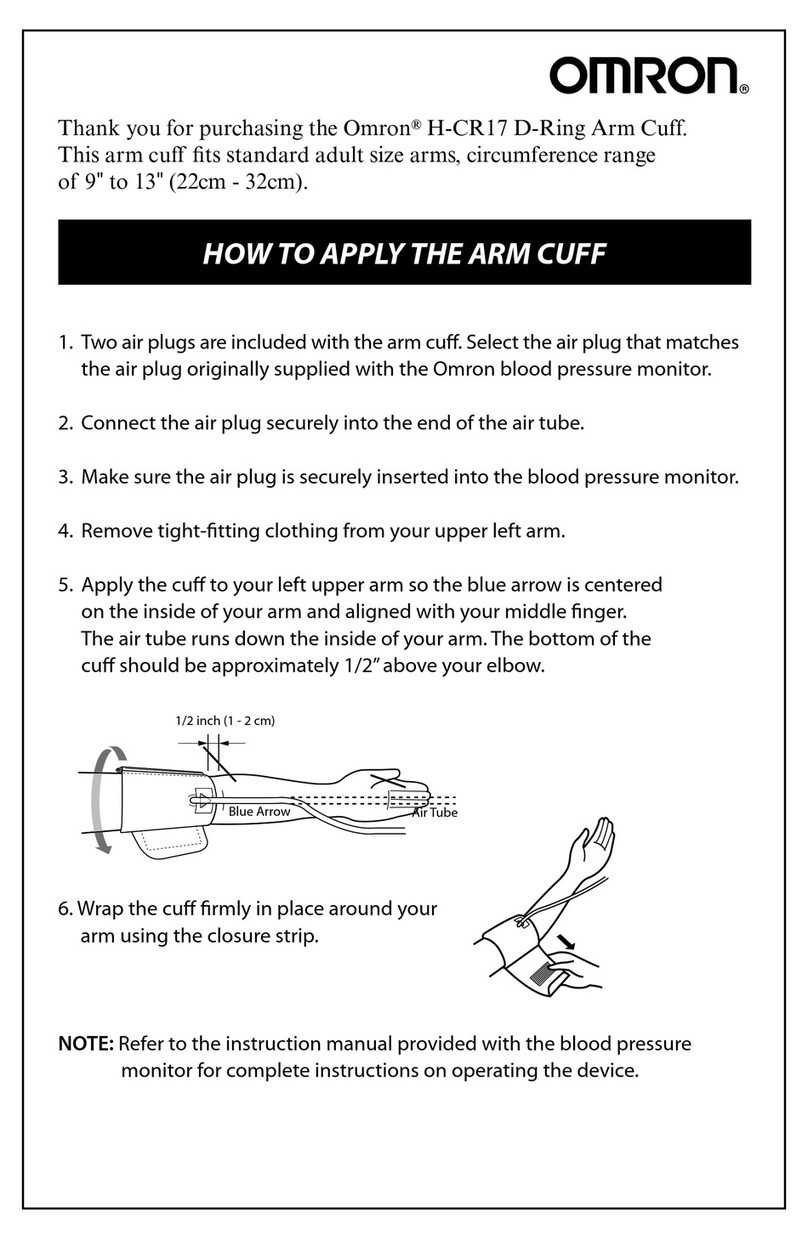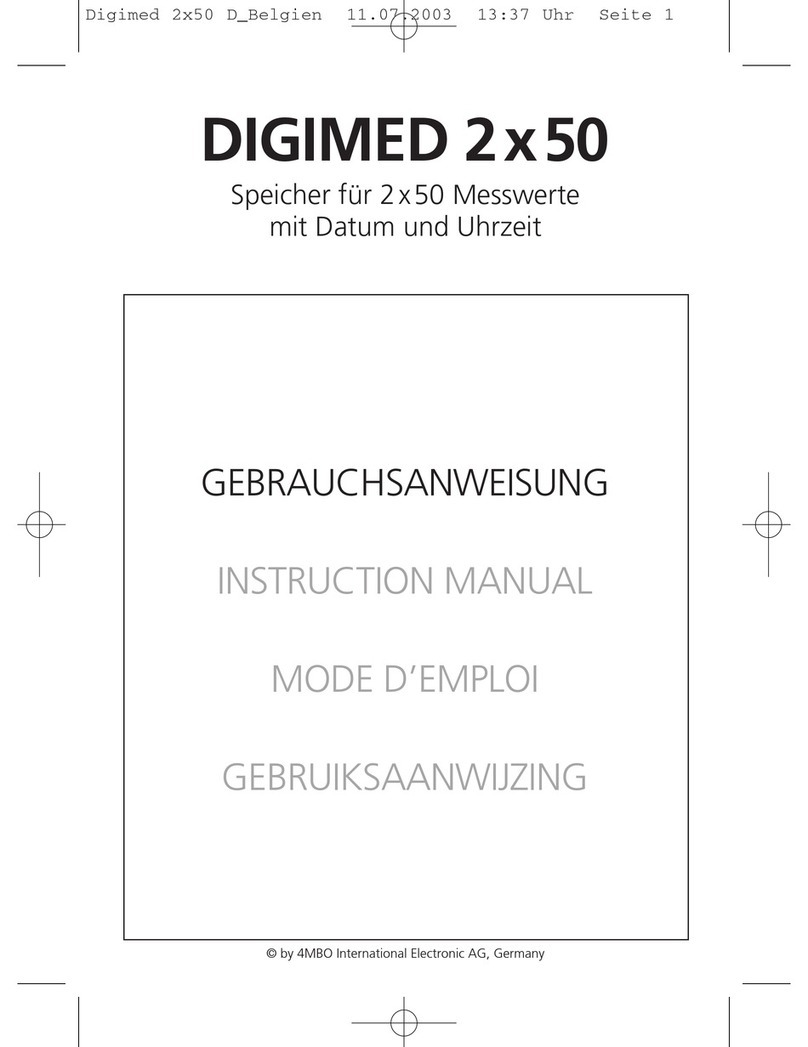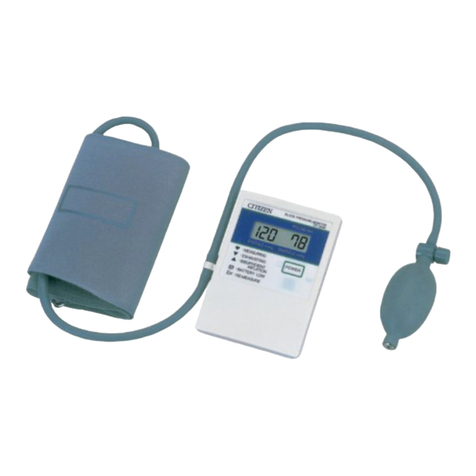Mediblink M540 AFib User manual

SLO Mediblink merilnik krvnega tlaka M540 AFib
NAVODILA ZA UPORABO
Prosimo, da pred uporabo izdelka v celoti preberete navodila
za uporabo
EN Mediblink Blood Pressure Monitor M540 AFib
INSTRUCTIONS FOR USE
Please read the instructions for use carefully before using the product
HRV MediblinkmjeračkrvnogtlakaM540AFib
UPUTE ZA UPOTREBU
Pažljivo pročitajte upute prije upotrebe uređaja

2
EN
TABLE OF CONTENTS
1. Introduction 5
1.1 Features of M540 5
1.2 Important information about self-measurement 5
2. Important Information of Blood-Pressure Measurement 6
2.1 How does high/low blood-pressure arise? 6
2.2 Which values are normal? 6
3. The Various Components of the Blood-Pressure Monitor 8
4. Putting the Blood-Pressure Monitor Into Operation 9
4.1 Inserting the batteries 9
4.2 User selection and setting the time/date 9
5. Carrying Out a Measurement 10
5.1 Before the measurement 10
5.2 Common sources of error 11
5.3 Fitting the cu 11
5.4 Measuring procedure 12
5.4.1 In AF mode 12
5.4.2 In Standard single mode 13
5.5 Discontinuing a measurement 13
5.6 Memory – storage and recall of the measurements 14
5.7 Memory – cancellation of all measurements 14
6. Appearance of the Pulse Arrhythmia Indicator for Early Detection 14
7. Appearance of the Atrial Fibrillation Indicator for Early Detection 15
8. Error Messages/Malfunctions 15
9. Care and Maintenance, Recalibration 16
10. Battery Life 17
11. Safety, Care and Disposal 17
12. Reference to Standards 18
13. Remark 18
14.TechnicalSpecications 19
15. Manufacturer’s Declaration 20
16. Warranty 22

3
SLO
1. Uvod 23
1.1 Funkcije merilnika krvnega tlaka M540 23
1.2 Pomembne informacije o samomerjenju 23
2. Pomembne informacije za merjenje krvnega tlaka 24
2.1 Kaj je vzrok za visok/nizek krvni tlak? 24
2.2 Katere vrednosti so normalne? 24
3. Različnekomponentemerilnikakrvnegatlaka 26
4. Pred uporabo merilnika krvnega tlaka 27
4.1 Vstavljanje baterij 27
4.2 Izbira uporabnika in nastavitev časa/datuma 27
5. Izvajanje meritve 28
5.1 Pred meritvijo 28
5.2 Pogosti viri napak 29
5.3 Nameščanje manšete 29
5.4 Postopek merjenja 30
5.4.1 Način AF 30
5.4.2 Standardni enojni način 31
5.5 Prekinitev merjenja 31
5.6 Pomnilnik – shranjevanje in priklic meritev 32
5.7 Pomnilnik – izbris vseh meritev 32
6. Prikazkazalnikazazgodnjeodkrivanjesrčnearitmije 32
7. Prikazkazalnikazazgodnjeodkrivanjeatrijskebrilacije 33
8. Sporočilaonapakah/okvare 33
9. Negainvzdrževanje,ponovnoumerjanje 34
10. Življenjskadobabaterije 35
11. Varnost, nega in odstranjevanje 35
12. Sklicevanje na standarde 36
13. Pomen simbolov 36
14.Tehničnipodatki 37
15. Izjava proizvajalca 38
16. Garancija 40
VSEBINA

4
HRV
1. Uvod 41
1.1 Značajke M540 41
1.2 Važne informacije o mjerenju krvnog tlaka kod kuće 41
2. Važneinformacijeomjerenjukrvnogtlaka 42
2.1 O krvnom tlaku 42
2.2 Koje su normalne vrijednosti krvnog tlaka? 42
3. Dijelovimjeračakrvnogtlaka 44
4. Početakradamjerača 45
4.1 Umetanje baterija 45
4.2 Odabir korisnika i podešavanje vremena 45
5. Mjerenje krvnog tlaka 46
5.1 Prije mjerenja 46
5.2 Najčešći izvori grešaka 46
5.3 Namještanje manžete 47
5.4 Postupak mjerenja 48
5.4.1 AF mod 48
5.4.2 Standardni mod 49
5.5 Prekid mjerenja 49
5.6 Memorija – Pohranjivanje i pregledavanje rezultata 50
5.7 Memorija – Brisanje svih zabilježenih rezultata 50
6. Indikator aritmije 50
7. Indikatorbrilacijeatrija 51
8. Poruke greške/neispravnosti 51
9. Održavanjeuređaja/kalibracija 52
10. Vijek trajanja baterije 53
11. Sigurnost, briga i zbrinjavanje 53
12. Norme 54
13. Napomena 54
14.Tehničkekarakteristike 55
15.Izjavaproizvođača 56
16. Jamstvo 57
SADRŽAJ

5
EN
1. Introduction
1.1 Features of M540
M540 with MDI, measuring in the ination, (with integrated time/date display) is
a fully automatic, digital blood-pressure measuring device for use on the arm,
which enables very fast and reliable measurement of the systolic and diastolic
blood-pressure as well as the pulse frequency by way of the oscillometric method
of measuring.
The device oers very high and clinical tested measurement accuracy and has
been designed to provide a maximum of user-friendliness.
The device is intended for self-use in home.
Before using, please read through this instruction manual carefully and then keep
it in a safe place.
For further questions on the subject of blood-pressure and its measurement,
please contact your doctor.
Attention!
1.2 Important information about self-measurement
• Substitution of a dierent component might result in measurement error.
• Cu is replaceable only by an original.
• Do not use with neonatal patients.
• It will cause harmful injury to the patient or aect the blood pressure due to
connection tubing kinking.
• Too frequent measurements can cause injury to the patient due to blood ow
interference.
• The application of the cu over a wound can cause further injury.
• The application of the cu and its pressurization on any limb where intravascular
access or therapy, or an arteriovenous (A-V) shunt, is present because of
temporary interference to blood ow and could result in injury to the patient.
• Do not let the cu and its pressurization on the arm on the side of a mastectomy.
• The need to check that operation of the automated sphygmomanometer does
not result in prolonged impairment of patient blood circulation.
• Not intended to be used together with HF surgical equipment.
• Do not forget: self-measurement means control, not diagnosis or treatment.
Unusual values must always be discussed with your doctor. Under no circumstances
should you alter the dosages of any drugs prescribed by your doctor.

6
EN
• The pulse display is not suitable for checking the frequency of heart pacemakers!
• In cases of cardiac irregularity (Arrhythmia), measurements made with this
instrument should only be evaluated after consultation with the doctor.
Electromagnetic interference
The device contains sensitive electronic components (Microcomputer). Therefore,
avoid strong electrical or electromagnetic elds in the direct vicinity of the device
(e.g. mobile telephones, microwave cookers). These can lead to temporary
impairment of the measuring accuracy.
2. Important Information of
Blood-Pressure Measurement
2.1 How does high/low blood-pressure arise?
The level of blood-pressure is determined in a part of the brain, the so-called
circulatory center, and adapted to the respective situation by way of feedback via
the nervous system. To adjust the blood-pressure, the strength and frequency of
the heart (Pulse), as well as the width of circulatory blood vessels is altered. The
latter is eected by way of ne muscles in the blood-vessel walls. The level of
arterial blood-pressure changes periodically during the heart activity: During the
»blood ejection« (Systole) the value is maximal (systolic blood-pressure value),
at the end of the heart’s »rest period« (Diastole) minimal (diastolic blood-pressure
value). The blood-pressure values must lie within certain normal ranges in order
to prevent particular diseases.
2.2 Which values are normal?
Blood pressure is too high if at rest, the diastolic pressure is above 90 mmHg
and/or the systolic blood-pressure is over 160 mmHg. In this case, please consult
your doctor immediately. Long-term values at this level endanger your health due
to the associated advancing damage to the blood vessels in your body.
Should the systolic blood-pressure values lie between 140 mmHg and
160 mmHg and/or the diastolic blood-pressure values lie between 90 mmHg
and 100 mmHg, likewise, please consult your doctor. Furthermore, regular self-
checks will be necessary.
With blood-pressure values that are too low, i.e. systolic values under
100 mmHg and/or diastolic values under 60 mmHg, likewise, please consult your
doctor. Even with normal blood-pressure values, a regular self-check with your
blood-pressure monitor is recommended. In this way you can detect possible

7
EN
changes in your values early and react appropriately. If you are undergoing
medical treatment to control your blood pressure, please keep a record of the
level of your blood pressure by carrying out regular self-measurements at specic
times of the day. Show these values to your doctor. Never use the results of
your measurements to alter independently the drug doses prescribed by
your doctor.
Table for classifying blood-pressure values (unit: mmHg) according to World
Health Organization:
Range &
broadcasting
Systolic
Blood-pressure
Diastolic
Blood-pressure
Measures
Optimal
Between 100 and 120 B
etween 60 and 80 Self-check
Normal
Between 120 and 129 B
etween 80 and 84 Self-check
High to
normal
Between 130 and 139 B
etween 85 and 89 Consult your
doctor
Slight
hypertension
Between 140 and 159
Between 90 and 99 Seek medical
advice
Medium
hypertension
Between 160 and 179 Between 100 and 109
Seek medical
advice
Strong
hypertension
Higher than 180 Higher than 110 Urgently seek
medical advice!
Further information
• If your values are mostly standard under resting conditions but exceptionally
high under conditions of physical or psychological stress, it is possible that you
are suering from so-called »labile hypertension«. Please consult your doctor if
you suspect that this might be the case.
• Correctly measured diastolic blood-pressure values above 120 mmHg require
immediate medical treatment.

8
EN
Atrial Fibrilation
Mode
Standard Single Mode
ON/OFF Button
Memory Button
Time and Date
Systolic Value
Diastolic
Value
Cu Check Indicator
Trac Light Display
User
Memory Set No
Memory Symbol
Heart Arrhythmia Indicator
Heart Symbol
Pulse
Low Battery Warning
Atrial Fibrilation Indicator (AFIB) Arm Movement Indicator
Ab Mode
3. The Various Components of the
Blood-Pressure Monitor

9
EN
4. Putting the Blood-Pressure
Monitor Into Operation
4.1 Inserting the batteries
a) Insert the batteries (4 x size AA 1.5V), thereby observing the indicated polarity.
b) If the battery warning “ ” icon appears in the display, the batteries remain
20% power to warn user the batteries will be run out.
c) If the battery warning “ ” icon appears in the display, the batteries are
empty and must be replaced by new ones.
Attention!
•After the battery warning “ ” icon appears, the device is blocked until the
batteries have been replaced.
•Please use “AA” Long-Life or Alkaline 1.5V Batteries.
•The use of 1.2V Accumulators is not recommended.
•If the blood-pressure monitor is left unused for long periods, please remove the
batteries from the device.
4.2 User selection and setting the time/date
User selection: This advanced blood pressure monitor allows you to track blood
pressure readings for 2 individuals independently.
a) Before measurement, make sure you set the unit for the intended user. The
unit can track results for 2 individuals (User 1, User 2).
b) Press and hold “”memory button for 2 seconds, “”
ashes on the display. To press “”to choose the desired
user.
c) We suggest the rst person to take their pressure to be User 1.
Setting the time, date
This blood-pressure monitor incorporates an integrated clock with date
display. This has the advantage, that at each measurement procedure, not
only the blood-pressure values are stored, but also the exact moment of the
measurement.
How to enter to the setting mode:
After batteries are inserted, the device will enter the setting mode automatically.

10
EN
The setting procedure as follows:
It is essential to set date and time. Otherwise, you will not be able to save your
measured value correctly with a date and time.
To use “”button to be adjustment button,
If you press and hold “”button, you can set the values more quickly.
1.
Year setting: the year ashes on the display: choose the desired
year with “” button and conrm with “” (ON/OFF) button.
2.
Month setting: the month ashes on the display: choose the desired
month with “” button and conrm with “” (ON/OFF) button.
3. Day setting: the day ashes on the display: choose the desired
day with “” button and conrm with “” (ON/OFF) button.
4. Hour setting: the hour ashes on the display: choose the
desired hour with “” button and conrm with “” (ON/OFF)
button.
5. Minute setting: the minute ashes on the display: choose the
desired measurement unit with “” button and conrm with “”
(ON/OFF)
button.
Please be noticed, the clock will begin to run from 2016-01-01 01:01, and Unit in
mmHg, if no key is pressed within 20 seconds.
5. Carrying Out a Measurement
5.1 Before the measurement
Avoid eating, smoking as well as all forms of exertion directly before the
measurement. All these factors inuence the measurement result. Try and
nd time to relax by sitting in an armchair in a quite atmosphere for about ten
minutes before the measurement.
Measure always on the same arm (normally left).
Attempt to carry out the measurements regularly at the same time of day, since
the blood-pressure changes during the course of the day.

11
EN
5.2 Common sources of error
Note: Comparable blood-pressure measurements always require the same
conditions! These are normally always quiet conditions.
All eorts by the patient to support the arm can increase the blood-pressure.
Make sure you are in a comfortable, relaxed position and do not activate any of
the muscles in the measurement arm during the measurement. Use a cushion
for support if necessary.
The performance of the automated sphygmomanometer can be aected by
extremes of temperature, humidity and altitude.
Avoid compression or restriction of the connection tubing.
A loose cu causes false measurement values.
With repeated measurements, blood accumulates in the respective arm, which
can lead to false results. Correctly executed blood-pressure measurements should
therefore rst be repeated after a 5-minute pause or after the arm has been held
up in order to allow the accumulated blood to ow away (after at least 3 minutes).
5.3Fittingthecu
Insert air connector into air outlet shown in
left photo and please make sure the tting of
the air connector completely and properly to
avoid air leakage.
a) The distance between the edge of cu
and the elbow should be approx. 2~3cm.
b) Secure the cu with the Velcro fastener,
so that it lies comfortably and not too
tight, whereby no space should remain
between the cu and the arm.
c) Lay the arm on a table, with the palm
upwards. Support the arm a little with a
rest (cushion), so that the cu rests at
about the same height as the heart. Take
care, that the cu lies free. Remain so for
2 minutes sitting quietly, before beginning
with the measurement.
M-L size
Air connector
Cu

12
EN
AF Switch
Standard Single
Mode
AF Mode
d) Let legs uncrossed, feet at on the oor,
back and arm supported.
5.4 Measuring procedure
Select the measuring mode: standard
single or AF mode
This device enables you to select either
standard (standard single measurement) or
AF mode (automatic two measurements). To
select standard mode, slide the AF switch on
the side of the device downwards to position
“1” and to select AF mode, slide this switch
upwards to position “AF”.
5.4.1 In AF mode:
In AF mode: In AF mode, 2 measurements are automatically taken
in succession and the result is then automatically analyzed and
displayed. Because blood pressure constantly uctuates, a result
determined in this way is more reliable than one produced by a
single measurement.
• After pressing the ON/OFF button, the “ ” symbol appears in the
display.
• The bottom, left hand section of the display shows a 1, 2 to
indicate which of the 2 measurements is currently being taken.
• A countdown indicates the remaining time.
• The individual results are not displayed. Your blood pressure will
only be displayed after the 2 measurements are taken.
• Do not remove the cu between measurements.
• If one of the individual measurements was questionable, a third
one is automatically taken.
In the measuring:
As the cu inates, the monitor automatically determines your ideal ination level.
This monitor detects your blood pressure and pulse rate during ination. The
heartbeat symbol ( ) ashes at every heartbeat. When the measurement has
been concluded. The measured systolic and diastolic blood-pressure values as
well as the pulse frequency are now displayed.

13
EN
Measured result:
› Example 1.
The measured systolic and diastolic blood-pressure values as
well as the pulse are now displayed.
Example (Fig.):
Systole 128, Diastole 70, Pulse 80, arrhythmia detected.
› Example 2
The measured systolic and diastolic blood-pressure values as
well as the pulse are now displayed.
Example (Fig.):
Systole 128, Diastole 70, Pulse 80, Ab detected.
The measurement results are displayed until you switch the device
o. If no button is pressed for 3 minutes, the device switches o automatically.
5.4.2 In Standard single mode:
Slide the AF switch on the side of the device downwards to position “1”
a) Press the ON/OFF button, the pump begins to inate the
cu. In the display, the increasing cu-pressure is continually
displayed.
b) As the cu inates, the monitor automatically determines your
ideal ination level. This monitor detects your blood pressure
and pulse rate during ination. The heartbeat symbol ( )
lashes at every heartbeat.
c) When the measurement has been concluded. The measured
systolic and diastolic blood-pressure values as well as the pulse
frequency are now displayed.
Example (Fig.): Systole 128, Diastole 70, Pulse 80
The measurement results are displayed until you switch the device o. If no
button is pressed for 3 minutes, the device switches automatically o, to save the
batteries.
5.5 Discontinuing a measurement
If it is necessary to interrupt a blood pressure measurement for any reason (e.g.
the patient feels unwell), the “ON/OFF” power button can be pressed at any time.
The device then immediately lowers the cu-pressure automatically.

14
EN
5.6
Memory – storage and recall of the measurements
The blood-pressure monitors automatically stores each of 120
measurement values. By pressing “ ” MEMORY button, to review
an average value of the last 3 measurements and all of the records
of 120 measurements (MR1, MR3, ..., MR120) can be displayed.
(MR1: Values of the oldest measurement)
5.7
Memory– cancellation of all measurements
Before you delete all readings stored in the memory, make sure you will not need refer
to the readings at a later date. Keeping a written record is prudent and may provide
additional information for your doctor’s visit. In order to delete all stored readings,
depress the MEMORY button for at least 5 seconds, the display will show the symbol
»CL« and then release the button. To permanently clear the memory, press the
MEMORY button while »CL« is ashing. To indicate deletion of stored readings.
6. Appearance of the Pulse Arrhythmia
Indicator for Early Detection
This symbol “ ” indicates that certain pulse irregularities were detected during
the measurement.
In this case, the result may deviate from your normal blood pressure – repeat
the measurement. In most cases, this is no cause for concern. However,
if the symbol appears on a regular basis (e.g. several times a week with
measurements taken daily) we advise you to tell your doctor.
Please show your doctor the following explanation:
Information for the doctor on frequent appearance of the Arrhythmia indicator
This instrument is an oscillometric blood pressure monitor that also analyses pulse
frequency during measurement. The instrument is clinically tested. The arrhythmia
symbol is displayed after the measurement, if pulse irregularities occur during
measurement. If the symbol appears more frequently (e.g. several times per week on
measurements performed daily) we recommend the patient to seek medical advice.
A record measured
by standard mode
A record with arrhythmia
measured by standard mode
Ab is detected
in AF mode

15
EN
The instrument does not replace a cardiac examination, but serves to detect
pulse irregularities at an early stage.
7. Appearance of the Atrial Fibrillation
Indicator for Early Detection
This device is able to detect atrial brillation (AFIB). This icon
“”
indicates
that atrial brillation was detected during the measurement. If the AFIB symbol
appears after having performed a full blood pressure measurement episode
(triplicate measurements), you are advised to wait for one hour and perform
another measurement episode (triplicate measurements). If the AFIB symbol
appears again, then you are advised to visit your doctor. If after repeated
measurement the AFIB symbol is no longer displayed there is no cause for
concern. In such case it is recommended to measure again the next day. Keep
the arm still during measuring to avoid false readings. This device may not detect
atrial brillation in people with pacemakers or debrillators.
8. Error Messages/Malfunctions
If an error occurs during a measurement, the measurement is discontinued and a
corresponding error code is displayed.
Error No. Possible cause(s)
ERR 1 No pulse has been detected.
ERR 2 Unnatural pressure impulses inuence the measurement result. Reason:
The arm was moved during the Measurement (Artefact).
ERR 3 The ination of the cu takes too long. The cu is not correctly seated.
ERR 5 The measured readings indicated an unacceptable dierence between
systolic and diastolic pressures. Take other reading following directions
carefully. Contact you doctor if you continue to get unusual readings.
ERR 8 The pressure in the cu is too high (over 290 mmHg).
Further Information – The level of blood-pressure is subject to uctuations even with
healthy people. Important thereby is, that comparable measurements always require
the same conditions (Quiet conditions)! If, in spite of observing all these factors,
the uctuations are larger than 15 mmHg, and/or you hear irregular pulse tones on
several occasions, please consult your doctor. For licensing, the device has been

16
EN
subjected to strict clinical tests, by which the computer program used to measure the
blood-pressure values was tested by experienced specialist doctors in Germany. The
same computer program is used in every individual device, and has thus also been
clinically tested. The manufacture of the devices takes place according to the terms
of the European standard for blood-pressure measuring devices (see technical data)
you must consult your specialist dealer or chemist if there are technical problems with
the blood-pressure instrument. Never attempt to repair the instrument yourself! Any
unauthorized opening of the instrument invalidates all warrantee claims!
Other possible malfunctions and their elimination
If problems occur when using the device, the following points should be checked
and if necessary, the corresponding measures are to be taken:
Malfunction Remedy
The display remains empty
when the instrument is
switched on although the
batteries are in place.
1. Check batteries for correct polarity and if necessary insert
correctly.
2.
If the display is unusual, re-insert batteries or exchange them.
The device frequently
fails to measure the blood
pressure values, or the
values measured are too
low (too high).
1. Check the positioning of the cu.
2. Measure the blood-pressure again in peace and quiet
under observance of the details made under point 5.
Every measurement
produces a dierent value
although the instrument
functions normally and
the values displayed are
normal
1. Please read the following information and the points
listed under “Common” sources of error. Repeat the
measurement.
Pleasenote:Bloodpressureuctuatescontinuallyso
successive measurements will show some variability.
Blood pressure measured
diers from those values
measured by the doctor.
1. Record the daily development of the values and consult
your doctor. Please note: Individuals visiting their doctor
frequently experience anxiety which can result in a
higher reading at the doctor than obtained at home
under resting conditions.
9. Care and Maintenance, Recalibration
a)
Do not expose the device to extreme temperatures, humidity, dust or direct sunlight.
b) The cu contains a sensitive air-tight bubble. Handle this carefully and avoid
all types of straining through twisting or buckling.

17
EN
c) Clean the device with a soft, dry cloth. Do not use petrol, thinners or similar
solvent. Spots on the cu can be removed carefully with a damp cloth and
soapsuds. The cu must not be washed!
d)
Do not drop the instrument or treat it roughly in any way. Avoid strong vibrations.
e)
Never open the device! Otherwise the manufacturer calibration becomes invalid!
10. Battery Life
1000 times measurement with 4- size “AA” alkaline Batteries.
11. Safety, Care and Disposal
Safety and protection
This instrument may be used only for the purpose described in this booklet. The
manufacturer cannot be held liable for the damage caused by incorrect application.
This instrument comprises sensitive components and must be treated with
caution. Observe the storage and operating conditions described in the
“Technical specications” section!
Protect it from water and moisture, extreme temperatures, impact and dropping,
contamination and dust, direct sunlight, heat and cold.
The cus are sensitive and must be handled with care.
Only pump up the cu once tted.
Do not use the instrument close to strong electromagnetic elds such as mobile
telephones or radio installations.
Do not use the instrument if you think it is damaged or notice anything unusual.
If the instrument is not going to be used for a prolonged period the batteries
should be removed.
Read the additional safety instructions in the individual sections of this
booklet. Ensure that children do not use the instrument unsupervised:
some parts are small enough to be swallowed.
Must use the recognized accessories, detachable parts and materials, if the
use of other parts or materials can degrade minimum safety.
A warning to remove primary batteries if the instruments is not likely to be used
for sometime.
Instrument care
Clean the instrument only with a soft, dry cloth.

18
EN
Disposal
Batteries and electronic instruments must be disposed of in accordance
with the locally applicable regulations, not with domestics waste.
12. Reference to Standards
Device standard: Device corresponds to the requirements of the European
standard for non-invasive blood- pressure monitor
Standard
IEC60601-1-6:2010+A1:2013/EN60601-1-6:2010+A1:2015
IEC60601-1:2005+A1:2012/EN60601 1:2006+A11:2011+A1:2013+A12:2014
IEC60601-1-2:2014/EN60601-1-2:2015
IEC/EN60601-1-11:2015
IEC80601-2-30:2009+A1:2013/EN80601-2-30:2010+A1:2015
The stipulations of the EU-Guidelines 93/42/EEC for Medical Products Class IIa have been fullled.
13. Remark
LOT number*
This denotes the compliance of
European Directive 93/42/EGS
Number of products in one
packaging
Before use, read the instructions.
Electronic instructions for use:
http://www.mediblink.com/f/m540.pdf
Type B equipment
IP22
Ingress of water
EU Representative
Some electrical and electrical
equipment forbid to abandon and
disposal at will
Manufacturer’s name and
address
Inapplicable baby
Cu Connector
Attention! Consult accompanying
documents
Product reference number
Serial number
Class IIa medical device
*Date of production: the rst two digits of the LOT number represent the month of production, and the
second two digits represent the year of production. Example: LOT 1025 = October 2025.

19
EN
14.TechnicalSpecications
Model: BP126A
Measurement Procedure: Oscillometric, corresponding to Korotko method
Phase I: Systolic, Phase V: diastolic
Display: Digital display
Measuring range: Pressure: 30 to 280 mmHg (in 1 mmHg increment)
Pulse: 40 to 199 beat/minute
Static accuracy: Pressure: ±3 mmHg
Pulse: ±5% of reading
Measuring resolution: 1 mmHg
Ination: Automatic ination by internal pump
Memory function: 2 user x 120 memory sets (SYS, DIA, Pulse)
Decompression: Constant exhaust valve system
Power source 1 (Battery): 4- size “AA” alkaline Batteries
Power source 2 (Adapter): Input : 100-240V ~ 50/60 Hz 0.2A
Output : 6V – 0.6A
Rated voltage: DC 6.0V 4.0W (direct current)
Operation temperature: 5~40°C/41~104°F
Operation humidity: 15%~80%RH maximum
Storage temperature: -20~+55°C/-4~+131°F
Storage humidity: 10%~95%RH maximum
Dimensions: 113× 90 × 56±1.0 mm
Weight: 518 g±5g (including batteries and cu)
Cupressuredisplayrange: 0~290 mmHg/0~38.7 kPa
Electrical shock protection: Internal power unit
Safetyclassications: Type B equipment
Mode of operation: Continuous operation
Protection against ingress of
water: IP22
Accessories: M-L size Cu, 4 “AA” batteries, string bag, instruction
manual, adapter

20
EN
15. Manufacturer’s Declaration
M540 with MDI is intended for use in the electromagnetic environment specied
below. The customer or the user of M540 with MDI should assure that it is used
in such an environment.
Electromagnetic Emissions: (IEC60601-1-2)
Emission Test
Compliance
Electromagnetic Environment
RF emission CISPR 11 Group 1
M540 with MDI uses RF energy only for internal functions. Therefore, this RF
emission is extremely weak and there is little chance of it creating any kind of
interference whatsoever with nearby electronic equipment.
RF emissions CISPR 11 Class B M540 with MDI is suitable for use in all establishments, including domestic
establishments and those directly connected to the public low voltage power supply
network that supplies buildings used for domestic purposes.
Harmonic emissions IEC 61000-3-2
Not applicable
Voltage uctuations/icker IEC 61000-3-3
Not applicable
Electromagnetic Immunity: (IEC60601-1-2)
Immunity test IEC60601-1-2 test level Compliance level Electromagnetic environment – guidance
Electrostatic discharge (ESD)
IEC 61000-4-2
±6 kV contact
±8 kV air
±6 kV contact
±8 kV air
Floors should be wood, concrete or ceramic tile.
If oors are covered with synthetic material, the
relative humidity should be at least 30 %
Electric fast transient/ burst
IEC 61000-4-4
±2 kV for power supply lines
±1 kV for input/output lines
Not applicable Mains power quality should be that of a typical
commercial or hospital environment.
Surge IEC 61000-4-5 ±1 kV dierential mode
±2 kV common mode
Not applicable Mains power quality should be that of a typical
commercial or hospital environment.
Voltage dips, short
interruptions and voltage
variations on power supply
input lines IEC 61000-4-11
<5 % U
T
(95 % dip in U
T
) for 0.5 cycle
40 % U
T
(60 % dip in U
T
) for 5 cycles
70 % U
T
(30 % dip in U
T
) for 25 cycles
<5 % U
T
(95 % dip in U
T
) for 5 sec.
Not applicable Mains power quality should be that of a typical
commercial or hospital environment. If the
user of the upper arm style requires continued
operation during power mains interruptions, it is
recommended that M520 with MDI be powered
from an uninterruptible power supply or a battery.
Power frequency (50/ 60 Hz)
magnetic eld IEC 61000-4-8
3 A/m Not applicable Not applicable
Note: U
T
is the a.c. mains voltage prior to application of the test level.
Immunity test IEC60601-1-2 test level IEC60601-1-2
test level Electromagnetic environment – guidance
Conducted
RF IEC
61000-4-6
Radiated
RF IEC
61000-4-3
3 Vrms 150 kHz to 80 MHz
80% AM (2Hz)
3 Vrms 80 MHz to 2.5 GHz
80% AM (2Hz)
3 Vrms
3 V/m
Portable and mobile RF communications equipment should be
used no closer to any part of M540 with MDI, including cables,
than the recommended separation distance calculated from the
equation applicable to the frequency of the transmitter.
Recommend separation distance
3 V
d = 1.2×p
1/2
80 Mhz do 800 MHz
d = 2.3×p
1/2
MHz do 2.5 GHz
Where Pis the maximum output power rating of the transmitter in
watts (W) according to he transmitter manufacturer and d is the
recommended separation distance in meters (m).
Field strengths from xed RF transmitters as determined by an
electromagnetic site survey
a
, should be less than the compliance
level in each frequency range
b
. Interference may occur in the vicinity
of equipment marked with the following symbol:
Table of contents
Languages:
Other Mediblink Blood Pressure Monitor manuals



